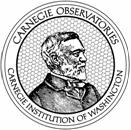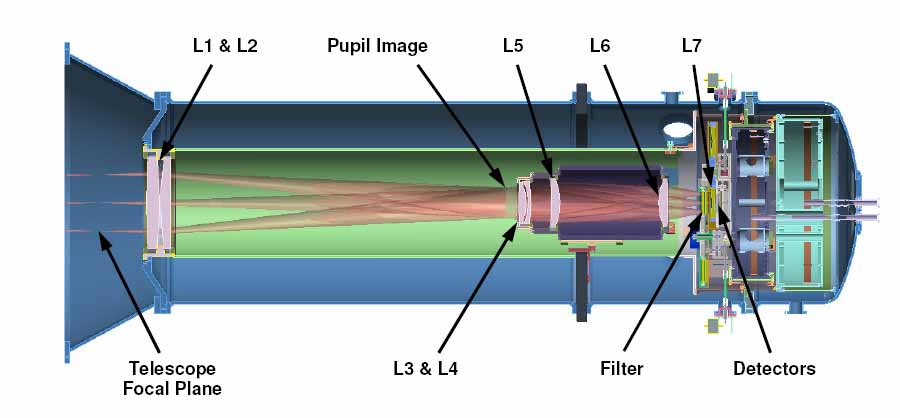
- Home
- Quick Facts
- Exposure Calculator
- Calibration
- Manual & Documents
- About Us
- Optics
- Mechanical
- Electronics
- Software
- Pictures
- Calendar
- Status
Technical Staff Links
Mechanical DesignThe Four Star Dewar is designed to provide two distinct temperature environments whereby the camera optics and radiation shield are cooled to about 200 K-deg whereas the imaging arrays and back end assembly are cooled to liquid nitrogen temperature (77 K-deg). We have utilized this dual temperature approach before on the PANIC IR camera and the WIRC IR camera at Baade and the duPont 100-inch, respectively. The dual temperature regime is advantageous since problems associated with thermal stress and thermal changes in optical properties are reduced to more manageable levels. |
The Four Star Dewar in Cross Section
|
|---|
As seen above in cross-section, a conical section adapts Four Star to the Magellan Nasmyth rotating ring/guider assembly. Light expanding from the telescope focal plane enters the field lens pair (L1 & L2) and travels down a radiation shield/light baffle to the Camera Module (L3-L6). The Camera Module lenses are supported in an Invar cell held by three radial flextures which penetrating the radiation shield and attach to the vacuum vessel on the support ring. The support ring serves as a rolling surface for the external astatic support assembly. The Camera Module lenses are assembled and aligned as a unit. To the right of the Camera Module the radiation shield transitions to the mating shield in section-II which is at liquid nitrogen temperature (LN2). These two shields are coupled to balance the heat load on the section-I shield and maintain it at 200 K-deg. Attached directly to the inner cold plate is the back end assembly which consists of the field flattener wheel (L7), filter wheels, detectors and ASIC cards. To the right of the inner LN2 tank is the shroud dewar that is the LN2 reservoir for the radiation shield and camera optics. |
There are four external motors that are coupled via ferro-fluidic feedthroughs that drive the field flattener wheel, two filter wheels and an iris at the pupil. A fifth ferro-fluidic feethrough exists to allow for adjustment of the focal plane height, but is not motorized as the focus will be performed automatically by the Magellan secondary. |

Carnegie Observatories, 813 Santa Barbara Street, Pasadena, California, 91101 USA
©Trustees of the Carnegie Institution of Washington
These Documentation pages are Design in Progress and content may change. Last updated: March 13, 2010
The Carnegie Observatories | Las Campanas Observatories | Contact Us
